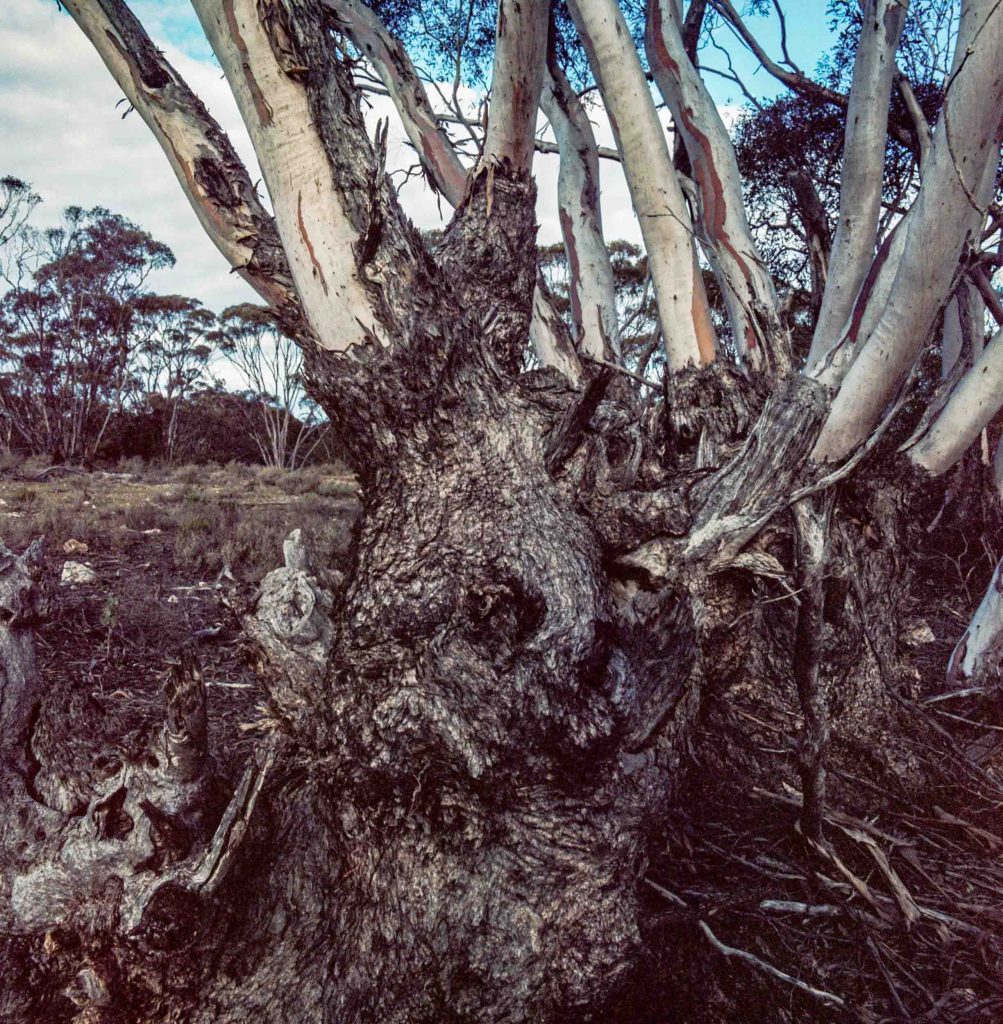On this particular occasion I was starting to tentatively explore the concept of space (as opposed to place) of the mallee woodland.
In conceptual photography the ‘concept’ is preconceived and so theory plays a formative role in the art practice. It refers back to the late 1960s to the early 1970s, where emphasis was placed on the concept or idea rather than the physical art object.
Conceptual Art was a reaction to the perceived constraints of modernIsm and the increasing commodification of the art object. Artists sought the means to think beyond the medium-specific aspects of traditional art forms, such as originality, style, expression, craft, permanence, decoration and display. Initially they used language and text to directly disseminate ideas, demystify artistic production and negate visuality and their artworks took the form of written statements, declarations, definitions and invitations.

Conceptual art in Australia, which is associated with Robert Rooney, Ian Burn, Mel Rumsden, Dale Hickey, Robert Hunter, Alex Danko and Richard Dunn, is seen by Sasha Grishin in his Australian Art: A History (2013) as an historical art movement that “didn’t go much beyond criticising in a rather obvious way, consumerism, the art market and the art establishment”. (p.469). This historical movement of conceptual art asserted the anti-aesthetic claim, it attempted to absolutise the non-aesthetic character of art.
That attempt failed. Some claim that recent photography ie., large-scale, pictorial and frequently digital, colour photography (Jeff Wall, Thomas Demand, and Andreas Gursky) that has dominated photographic art since the 1990s represents a turn away from conceptual art.
An alternative interpretation is that conceptual art is not a traditional art-historical or art-critical concept at the level of medium, aesthetic form, style or movement. It denotes a transdisciplinary art premised on the complex historical experience and critical legacy of conceptual art. This is interpreted as a rupture with the traditional aesthetics that has been associated with aesthetic, sensual experience and perception (to feeling) and is opposed to concepts, conceptual thinking. It is associated with the industrial archaeology of Bernd and Hilla Becher and Ed Ruscha’s Twentysix Gasoline Stations photo book (1963). Ruscha’s books provide a verbal ‘score’ to be filled out by specific photographic realizations or performances–the title is formulated in advance of taking the photographs.
What we have as a result is the tension of the aesthetic and conceptual components within the generic concept of the art work.

